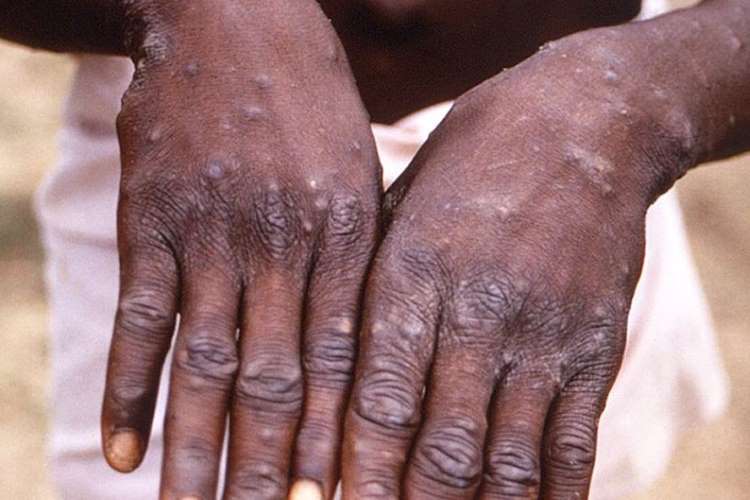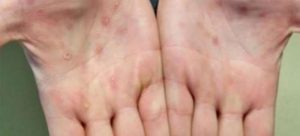
As the world is slowly recovering from the devastation caused by the Covid-19 pandemic, yet another deadly viral infection is rearing its head. Monkeypox, recently declared a public health emergency of international concern by the World Health Organisation, can spread from infected animals to people by direct contact with blood, body fluids, or mucous or cutaneous sores.
Close contact with respiratory secretions, skin sores on an infected person, or recently contaminated objects can cause human-to-human transmission. Additionally, transmission can take place through intimate contact during labour and delivery or via the placenta from mother to foetus. Sexual transmission pathways and intimate physical contact are proven risk factors for transmission.
The signs of monkeypox resemble smallpox symptoms. Smallpox is a contagious, crippling and usually fatal condition that has flu-like symptoms and a rash that first appears on the face, hands and forearms before moving to other parts of the body. Smallpox immunisations were stopped and the disease was deemed eradicated in 1980. In 1980, smallpox vaccinations were stopped and the disease was declared extinct.
READ I ‘India ‘should produce smallpox vaccines to combat monkeypox’
Symptoms of monkeypox
The signs and symptoms of monkeypox include high body temperature, headache, muscle aches, exhaustion and swollen lymph nodes. Rashes and pimples appear within a few days of infection that can be very painful. These lumps develop into blisters that ooze pus which eventually dry out and fall off. The entire process can take two to four weeks. Additionally, patients may get sores on their anus, vagina or mouth. Not all monkeypox patients experience every symptom.

Most cases in the current (2022) outbreak are not exhibiting the typical constellation of symptoms. Only a few lesions, no enlarged lymph nodes, a lower fever and fewer additional symptoms of sickness are present in this unusual presentation. Anyone may possess it without realising it. However, even if you do not even exhibit many symptoms of the virus, you can still infect others through extended close contact.
Prevention and treatment
Monkeypox can be prevented by decreasing the risk of exposure and avoiding contact with people who have recently visited areas where monkeypox is prevalent. The likelihood of infection decreases by maintaining strict hygiene, washing hands with soap and water, or sanitising them with alcohol-based sanitisers. The primary preventative method for monkeypox also includes increasing public awareness of risk factors and teaching individuals about the steps they can take to minimise viral exposure.
No specific treatment has been recognised as effective for monkeypox infections. It is recommended by doctors that patients remain isolated in a hospital to prevent the disease from spreading and to treat any recurrent symptoms. In the US, patients with monkeypox receive 85% effective smallpox vaccination since health professionals have repeatedly observed that the diseases are identical. Patients with monkeypox have proven to be extremely curable with antivirals and vaccinia immune globulin.
More than 20,000 cases of monkeypox have been documented in 77 countries worldwide including India, which has four cases, three of which were recorded in Kerala and one in Delhi. The seriousness of the issue can be understood with some deaths being reported in West Africa. However, health professionals have emphasised that there is very little possibility of a significant breakout and risk to the general public.
India’s efforts to tame monkeypox
India’s first case of monkeypox was confirmed on July 14 when a person who had returned to Kerala from the UAE tested positive. The ministry of health and family welfare issued a guideline on managing the monkeypox disease which stresses on surveillance and rapid identification of new cases as the key public health measures for outbreak containment.
The guidelines include the following: epidemiology of the disease; contact and case definitions; clinical features and its complications; diagnosis; case management; risk communication and guidance on Infection Prevention and Control (IPC). Additionally, contacts should be watched at least daily for the appearance of symptoms for a minimum of 21 days (per the case definition) following their last encounter with a patient or their contaminated items during the infectious period.
In India, the world’s second most populated country, spreading of the disease could result in a situation similar to Covid-19. To prevent monkeypox from becoming an epidemic, the citizens should be aware of the disease’s contagious, crippling and usually fatal effects and take precautions as per government guidelines. In the first and second waves of Covid, India lost a large number of citizens. However, India made history by vaccinating people with more than 2 billion doses. To combat monkeypox, citizens and government need to collaborate closely. As this is a public health concern, the government must be prepared with protocols for prevention and treatment.
(The author works with CUTS International, a global public policy research and advocacy organisation.)

